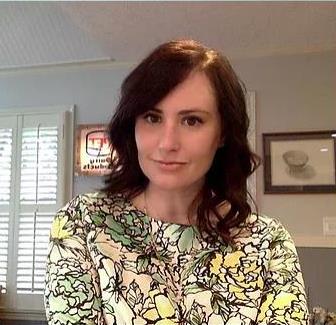Affiliation: Kennesaw State University

Dr. Flora Brooke Anthony is an art historian with a particular interest in Ancient Egypt. She is currently a Visiting Assistant Professor at Kennesaw State University, and holds her degrees from Emory University (Ph.D.), the University of Memphis (M.A.), and Georgia State University. Her research interests include Ancient Egyptian materials (especially faience), Ancient Egyptian magic and international relations, forgeries and authenticity, and expressions of identity.
Khaemwaset, one of the sons of Ramesses the Great, is considered to be the first Egyptologist. He lived on in legend and folk tales hundreds of years after his death as an incredibly powerful Egyptian sorcerer. Today Khamwaset’s shabtis (magial funerary figurines) are found in museums around the world. Unfortunately, the shabtis of Khaemwaset have often been faked, leading some scholars to question the authenticity of all such objects that are not documented in dig records. However, one cannot simply discount all of Khaemwaset’s shabtis because there are numerous forgeries. Multiple methods are needed evaluate the authenticity of these often-faked objects. In this study, two complementary approaches; stylistic examination and X-ray Florescence (XRF) are used to evaluate a number of unprovenanced shabtis. These different approaches make it possible to group the shabtis by similarities in appearance, surface elemental composition, and the absorption of radiation post-production. Comparisons amongst these groups provide a clearer picture of their authenticity.
In ancient Egypt one of the king’s primary duties was to maintain order (maat) and destroy chaos (isfet) in the cosmos. Since the beginning of Egyptian history, images of foreigners were used as symbols for chaos. Therefore the imagery where Egyptian kings destroyed foreign enemies was popular for the duration of pharaonic history. The early 18th dynasty (1550-1372 BCE) was the height of international trade, diplomacy, and Egyptian imperial expansion. During this time new images of foreigners bearing tribute became popular in the tombs of the necropolis at Thebes, where the Egyptian elite were buried. These tribute-bearing foreigners carry luxury goods before the king, which serve as symbols underscoring the tomb owner’s wealth and access to exotic products. The tomb owner is thus considered a figure of prestige, as he is present in these scenes and is associated with the king and international affairs. Foreigners, who are inherently chaotic according to traditional Egyptian ideology, are represented in an orderly fashion in these scenes. This not only shows the ability of the Egyptian state to impose order on foreign lands, but these images of foreigners and the objects that they carry are symbols of the tomb owner’s ability to overcome the chaos of death and achieve a successful afterlife.